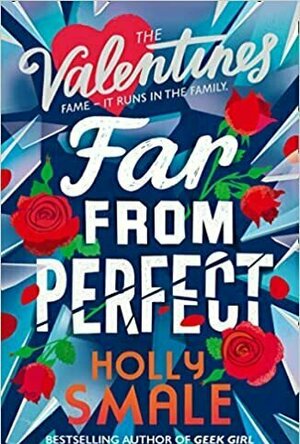Search
Search results
Hazel (2934 KP) rated A Child for the Reich in Books
Dec 4, 2022
Inspired by a true story, this book is absolutely gripping and full of tension, heartbreak and the story of one woman's quest to find and rescue her daughter from the Nazi's Lebensborn programme.
Anna Dankova and her family live in Nazi-occupied Prague. Her husband and brother-in-law have joined the Czech Resistance leaving them to try and raise their children with the ever present danger of the Nazi soldiers, the Gestapo and the much feared Brown Sisters; female nurses who were dedicated to the Nazi cause. They worked for the Nazi Welfare Organization and searched through villages and towns for Aryan-looking children.
Anna and her sister's children are blonde-haired and blue-eyed and their fears are only too real but they are powerless against the might of the Nazi regime and one day, Anna's daughter, Ema is literally ripped from her arms in broad daylight leaving Anna, understandably, distraught and determined to get her back whatever the risks before she is lost forever.
Anna uses all her skills, courage and guile to find her daughter, infiltrate the children's home where she has been placed to be indoctrinated into the German way and to figure out a way to get her out of there whilst under the ever present threat of exposure and certain death.
This is a story full of tension and heartbreak and one mother's determination to find her daughter no matter what and it was absolutely gripping and I have no hesitation recommending it to those of you who 'enjoy' reading historical fiction based on true stories and events.
Thank you to HarperCollins UK, One More Chapter and NetGalley for enabling me to read and share my thoughts of A Child for the Reich.
Anna Dankova and her family live in Nazi-occupied Prague. Her husband and brother-in-law have joined the Czech Resistance leaving them to try and raise their children with the ever present danger of the Nazi soldiers, the Gestapo and the much feared Brown Sisters; female nurses who were dedicated to the Nazi cause. They worked for the Nazi Welfare Organization and searched through villages and towns for Aryan-looking children.
Anna and her sister's children are blonde-haired and blue-eyed and their fears are only too real but they are powerless against the might of the Nazi regime and one day, Anna's daughter, Ema is literally ripped from her arms in broad daylight leaving Anna, understandably, distraught and determined to get her back whatever the risks before she is lost forever.
Anna uses all her skills, courage and guile to find her daughter, infiltrate the children's home where she has been placed to be indoctrinated into the German way and to figure out a way to get her out of there whilst under the ever present threat of exposure and certain death.
This is a story full of tension and heartbreak and one mother's determination to find her daughter no matter what and it was absolutely gripping and I have no hesitation recommending it to those of you who 'enjoy' reading historical fiction based on true stories and events.
Thank you to HarperCollins UK, One More Chapter and NetGalley for enabling me to read and share my thoughts of A Child for the Reich.
Merissa (13585 KP) rated Ericksen (Gen-Heirs: The Guardians of Sziveria, #5) in Books
Nov 7, 2022
ERICKSEN continues the brilliance that is the Gen-Heirs: The Guardians of Sziveria series. For the first time, our male protagonist is NOT a Gen-Heir, or Shield Guardian, or any of the other ranks. Instead, Vayden is Gen-Common - in other words "normal." Melody, on the other hand, does have a talent - logic-based as far as she has been told. She has been raised to believe Gen-Common people are basically a waste of space, so it was wonderful to see the changes that occur when she realises how wrong she was. Of course, to believe something that fundamental means her upbringing wouldn't be classed as healthy by any stretch of the imagination, and the contrast between her family and Vayden's was so stark, beautiful in the differences.
The overall story arc continues but you don't need to have read any of the previous books to understand this one. I would recommend you read them simply for the amazing stories they are!
The pacing is wonderful, giving you moments of action coupled with moments of silence, vulnerability, and tenderness. There are moments of steam, but that isn't the main focus of the novel.
I loved seeing Melody grow as a person and as a talent. Vayden stole my heart from the start and just compounded it with every sweet and loving moment. This was a fantastic addition to the series and I can't wait for it to continue. Highly recommended by me.
** same worded review will appear elsewhere **
* A copy of this book was provided to me with no requirements for a review. I voluntarily read this book, and the comments here are my honest opinion. *
Merissa
Archaeolibrarian - I Dig Good Books!
The overall story arc continues but you don't need to have read any of the previous books to understand this one. I would recommend you read them simply for the amazing stories they are!
The pacing is wonderful, giving you moments of action coupled with moments of silence, vulnerability, and tenderness. There are moments of steam, but that isn't the main focus of the novel.
I loved seeing Melody grow as a person and as a talent. Vayden stole my heart from the start and just compounded it with every sweet and loving moment. This was a fantastic addition to the series and I can't wait for it to continue. Highly recommended by me.
** same worded review will appear elsewhere **
* A copy of this book was provided to me with no requirements for a review. I voluntarily read this book, and the comments here are my honest opinion. *
Merissa
Archaeolibrarian - I Dig Good Books!
Merissa (13585 KP) rated On the 2 in Books
Aug 2, 2023
ON THE 2 is a standalone story set in New York that features some characters from previous books. You don't need to have read those to get the benefit, but I did so love seeing them and remembering their stories!
Nash is closed-off and straight-laced, working with numbers because they make sense and won't lie or betray him. Ethan is friendly and outgoing; working in a department store, he needs to be approachable. These two meet on the 2, a subway train that they both take from home to work.
One of the things guaranteed by a Felice Stevens book is the characters will be relatable. Whether because they're the grumpy or the sunshine, there will be something there that you read and laugh out loud with, from either doing the same thing yourself or knowing someone else who has done it. Neither Ethan nor Nash have the best family lives but they make the best with what they've got, in the way they know. I absolutely adored the slow burn with these two, as both of them try to figure the other one out.
I also thoroughly enjoyed how the difficulties they faced weren't just swept away in a wonderful wave of love. They worked it out and got to where they needed to be by communicating and working together. Nash speaks to Oscar, and Ethan speaks to Julia - both of them choosing kindness. Two more fantastic scenes!
A great book that I loved and have no hesitation in HIGHLY recommending.
** same worded review will appear elsewhere **
* A copy of this book was provided to me with no requirements for a review. I voluntarily read this book; the comments here are my honest opinion. *
Merissa
Archaeolibrarian - I Dig Good Books!
Aug 2, 2023
Nash is closed-off and straight-laced, working with numbers because they make sense and won't lie or betray him. Ethan is friendly and outgoing; working in a department store, he needs to be approachable. These two meet on the 2, a subway train that they both take from home to work.
One of the things guaranteed by a Felice Stevens book is the characters will be relatable. Whether because they're the grumpy or the sunshine, there will be something there that you read and laugh out loud with, from either doing the same thing yourself or knowing someone else who has done it. Neither Ethan nor Nash have the best family lives but they make the best with what they've got, in the way they know. I absolutely adored the slow burn with these two, as both of them try to figure the other one out.
I also thoroughly enjoyed how the difficulties they faced weren't just swept away in a wonderful wave of love. They worked it out and got to where they needed to be by communicating and working together. Nash speaks to Oscar, and Ethan speaks to Julia - both of them choosing kindness. Two more fantastic scenes!
A great book that I loved and have no hesitation in HIGHLY recommending.
** same worded review will appear elsewhere **
* A copy of this book was provided to me with no requirements for a review. I voluntarily read this book; the comments here are my honest opinion. *
Merissa
Archaeolibrarian - I Dig Good Books!
Aug 2, 2023
Lyndsey Gollogly (2893 KP) rated Find Me ( Book 1) in Books
Jan 6, 2023
🔞🔞🔞
5 of 235
Kindle
Find Me (Book 1)
By K L Jones
⭐️⭐️
🌶🌶🌶🌶🌶
Sophie Rush leads a chaotic life, she is a curvaceous 40 something, single mother of two children, from the outside looking in she seems to have it all. The looks, the family and the successful career. Even though she is happy with her lot, she finds herself seeking the one thing that is eluding her – love.
Just when she thinks all hope is lost, Sophie sees him, Finn Holston. There was just one problem, he was an up-and-coming actor and therefore one of the most inaccessible men on the planet, that didn’t deter Sophie though, she wanted him and only him! Right there and then she decided he was the one for her and throwing all caution to the wind she decides to pursue him, in the hope that if he saw her, he would want her too.
Will Sophie get her happily ever after she’s always wanted, or is she destined to be alone forever?
Come and follow this hysterical, rollercoaster ride of a journey Sophie takes on the path to find love.
I just don’t know where to start with this! I want to go with 2.5 stars. It was one of those books that had me questioning why the hell was I reading it! It wasn’t awful it had some parts that had me laughing and some parts that I just cringed at. It’s one of those stories that we have all fantasied over meeting that movie star we are all desperately in love with and him wanting us back. So it is relatable and I want to see where it goes. I did get some serious Ness vibes you know the one from Gavin n Stacey 😂😂
5 of 235
Kindle
Find Me (Book 1)
By K L Jones
⭐️⭐️
🌶🌶🌶🌶🌶
Sophie Rush leads a chaotic life, she is a curvaceous 40 something, single mother of two children, from the outside looking in she seems to have it all. The looks, the family and the successful career. Even though she is happy with her lot, she finds herself seeking the one thing that is eluding her – love.
Just when she thinks all hope is lost, Sophie sees him, Finn Holston. There was just one problem, he was an up-and-coming actor and therefore one of the most inaccessible men on the planet, that didn’t deter Sophie though, she wanted him and only him! Right there and then she decided he was the one for her and throwing all caution to the wind she decides to pursue him, in the hope that if he saw her, he would want her too.
Will Sophie get her happily ever after she’s always wanted, or is she destined to be alone forever?
Come and follow this hysterical, rollercoaster ride of a journey Sophie takes on the path to find love.
I just don’t know where to start with this! I want to go with 2.5 stars. It was one of those books that had me questioning why the hell was I reading it! It wasn’t awful it had some parts that had me laughing and some parts that I just cringed at. It’s one of those stories that we have all fantasied over meeting that movie star we are all desperately in love with and him wanting us back. So it is relatable and I want to see where it goes. I did get some serious Ness vibes you know the one from Gavin n Stacey 😂😂

Riving-Ton-Ton-Ton: The Letty Vargas Story
Book
Riving-Ton-Ton-Ton tells the story of Leticia “Letty” Cruz, a New Yorker who was born into a...
Biography

Town Bronze Box Set
Book
All three novellas in Ellie Thomas’ Regency Town Bronze series are gathered together in this box...
Ivana A. | Diary of Difference (1171 KP) rated Far From Perfect (The Valentines, #2) in Books
Oct 5, 2020
<a href="https://amzn.to/2Wi7amb">Wishlist</a>; | <a
<a href="https://diaryofdifference.com/">Blog</a>; | <a href="https://www.facebook.com/diaryofdifference/">Facebook</a>; | <a href="https://twitter.com/DiaryDifference">Twitter</a>; | <a href="https://www.instagram.com/diaryofdifference/">Instagram</a>; | <a href="https://www.pinterest.co.uk/diaryofdifference/pins/">Pinterest</a>;
#1 <a href="https://www.goodreads.com/review/show/2685992062">Happy Girl Lucky</a> - ★★★★★
#2 <a href="https://www.goodreads.com/review/show/3305103151">Far From Perfect</a> - ★★★★
<img src="https://diaryofdifference.com/wp-content/uploads/2020/08/Book-Review-Banner-74.png"/>;
I am extremely happy and excited to be part of the blog tour for Far From Perfect by Holly Smale. Thank you to the team at Harper Collins and Kaleidoscopic Tours - for letting me part of this tour and sending me a copy of the book.
Far From Perfect is the second book in the Valentines series. Read my review of the first book - Happy Girl Lucky.
<b><i>Synopsis:</i></b>
Being born in a family that is considered Hollywood royalty is not easy. When all her family is expecting perfection form her, Faith just wants to be normal.
Instead, paparazzi follows her everywhere. She needs to rehearse everything she says and does. She needs to be herself - but, you know, someone else... at all times.
<b><i>My Thoughts:</i></b>
Far From Perfect manages to portray an unwanted life in the spotlight of a girl that simply wants to be normal. I was very satisfied to see how the media was presented in this book. They push famous people's boundaries, twist stories and stir waters, causing dramas. And while I understand this is their job, I am grateful to see someone write about the negative impact they have on famous people.
I loved Faith as a character and I was so proud to see her stand up and fight. It was so easy to put myself in her shoes and experience her anger and frustration of not being listened to. I loved the friendship Faith has with Scarlett. It is real and funny and strong. But most of all, I loved the sister bond that Faith has with Mercy. It is so pure and emotional, and it made me think of my own little sister and how much she truly means to me.
The story Faith tells us is a story that will touch every teenager. The struggles of love, family, friendships and finding purpose in the world. We have all been there, we have all fought the same battles and we understand. Even though some problems may seem trivial as a grown up, I remember how important those moments were to me when I was young, and how they shaped me today, and I was glad this was not underestimated in this book.
And sometimes, life makes us forget. Time passes by, and we are lost for a bit. Until a book comes in our hands - to remind us what really matters. This is that book. A beautiful continuation of the series. I recommend it to the teenagers - to find your purpose; and also to everyone else - to remember what that purpose is!
<a href="https://amzn.to/2Wi7amb">Wishlist</a>; | <a
<a href="https://diaryofdifference.com/">Blog</a>; | <a href="https://www.facebook.com/diaryofdifference/">Facebook</a>; | <a href="https://twitter.com/DiaryDifference">Twitter</a>; | <a href="https://www.instagram.com/diaryofdifference/">Instagram</a>; | <a href="https://www.pinterest.co.uk/diaryofdifference/pins/">Pinterest</a>;
<a href="https://diaryofdifference.com/">Blog</a>; | <a href="https://www.facebook.com/diaryofdifference/">Facebook</a>; | <a href="https://twitter.com/DiaryDifference">Twitter</a>; | <a href="https://www.instagram.com/diaryofdifference/">Instagram</a>; | <a href="https://www.pinterest.co.uk/diaryofdifference/pins/">Pinterest</a>;
#1 <a href="https://www.goodreads.com/review/show/2685992062">Happy Girl Lucky</a> - ★★★★★
#2 <a href="https://www.goodreads.com/review/show/3305103151">Far From Perfect</a> - ★★★★
<img src="https://diaryofdifference.com/wp-content/uploads/2020/08/Book-Review-Banner-74.png"/>;
I am extremely happy and excited to be part of the blog tour for Far From Perfect by Holly Smale. Thank you to the team at Harper Collins and Kaleidoscopic Tours - for letting me part of this tour and sending me a copy of the book.
Far From Perfect is the second book in the Valentines series. Read my review of the first book - Happy Girl Lucky.
<b><i>Synopsis:</i></b>
Being born in a family that is considered Hollywood royalty is not easy. When all her family is expecting perfection form her, Faith just wants to be normal.
Instead, paparazzi follows her everywhere. She needs to rehearse everything she says and does. She needs to be herself - but, you know, someone else... at all times.
<b><i>My Thoughts:</i></b>
Far From Perfect manages to portray an unwanted life in the spotlight of a girl that simply wants to be normal. I was very satisfied to see how the media was presented in this book. They push famous people's boundaries, twist stories and stir waters, causing dramas. And while I understand this is their job, I am grateful to see someone write about the negative impact they have on famous people.
I loved Faith as a character and I was so proud to see her stand up and fight. It was so easy to put myself in her shoes and experience her anger and frustration of not being listened to. I loved the friendship Faith has with Scarlett. It is real and funny and strong. But most of all, I loved the sister bond that Faith has with Mercy. It is so pure and emotional, and it made me think of my own little sister and how much she truly means to me.
The story Faith tells us is a story that will touch every teenager. The struggles of love, family, friendships and finding purpose in the world. We have all been there, we have all fought the same battles and we understand. Even though some problems may seem trivial as a grown up, I remember how important those moments were to me when I was young, and how they shaped me today, and I was glad this was not underestimated in this book.
And sometimes, life makes us forget. Time passes by, and we are lost for a bit. Until a book comes in our hands - to remind us what really matters. This is that book. A beautiful continuation of the series. I recommend it to the teenagers - to find your purpose; and also to everyone else - to remember what that purpose is!
<a href="https://amzn.to/2Wi7amb">Wishlist</a>; | <a
<a href="https://diaryofdifference.com/">Blog</a>; | <a href="https://www.facebook.com/diaryofdifference/">Facebook</a>; | <a href="https://twitter.com/DiaryDifference">Twitter</a>; | <a href="https://www.instagram.com/diaryofdifference/">Instagram</a>; | <a href="https://www.pinterest.co.uk/diaryofdifference/pins/">Pinterest</a>;

Pic Scanner: Scan photos and albums
Photo & Video and Utilities
App
Scan MULTIPLE photos with one touch. All cropped and saved individually. UNLIMITED use. No locked...

JusTalk: simple video calling
Social Networking
App
JusTalk is a FREE high-quality video and voice calling app for everyone - simple, reliable, secure...
Melanie Caldicott (6 KP) rated 10 Minutes 38 Seconds in This Strange World in Books
Apr 29, 2021
You can also read my review at my blog - https://roamingthroughbooks.wordpress.com
I saw this book reviewed on The Sky Arts Book Club and Shafak was interviewed and I think I fell a little in love. Shafak is a beautiful human being who is currently self-exiled from Turkey to the content of her novels being subject to investigation as part of a legal movement in which writers are frequently prosecuted. A passionate storyteller, who writes openly about human rights, her protagonists are often the fallen, forgotten and marginalised. Needless to say I have been looking forward to reading this ever since.
10 Minutes 38 Seconds in this Strange World is a novel about a murdered street walker, Tequila Leila and the last moments of brain activity that is said to occur after the heart has stopped beating. The memories of her life flood back, often related to taste and smell and we start to learn about the story of her life.
Central to her memories and providing a backbone to her life were The Five, – five people with which she formed close, integral friendships and in the absence of her blood relatives, are Leila’s “family”.
The book is structured around three parts – the first, The Mind telling the stories of her post-mortem memories, the second, The Body about how she was murdered and the impact it has on The Five, and finally, The Soul which is a touching finale in which The Five determine to give Leila the send-off she deserves.
Shafak is such a clever storyteller and is able to illuminate aspects of humanity which is often avoided or ignored, which make us feel uncomfortable, and yet her tenderness and compassion shine through the portrayal of all her characters enabling the reader to walk a mile in the shoes of those who are often forgotten.
For a book centred around death, an issue that rarely sits comfortably with human beings, 10 Minutes 38 Seconds in this Strange World confronts it without fear. She skilfully takes a sex worker’s body which is disregarded in its anonymity by those that are responsible for sweeping up the detritus of the Istanbul streets, and reveals a story of a life, full of tragedy, joy and love.
I love how Elif Shafak takes the stories of all of The Five and transforms the insignificant to the significant through the love they have for Leila and each other. In a society which elevates the rich and famous and makes their voices the loudest and most significant in the world, I loved the truth which was affirmed in this book about what a life of substance really means.
I saw this book reviewed on The Sky Arts Book Club and Shafak was interviewed and I think I fell a little in love. Shafak is a beautiful human being who is currently self-exiled from Turkey to the content of her novels being subject to investigation as part of a legal movement in which writers are frequently prosecuted. A passionate storyteller, who writes openly about human rights, her protagonists are often the fallen, forgotten and marginalised. Needless to say I have been looking forward to reading this ever since.
10 Minutes 38 Seconds in this Strange World is a novel about a murdered street walker, Tequila Leila and the last moments of brain activity that is said to occur after the heart has stopped beating. The memories of her life flood back, often related to taste and smell and we start to learn about the story of her life.
Central to her memories and providing a backbone to her life were The Five, – five people with which she formed close, integral friendships and in the absence of her blood relatives, are Leila’s “family”.
The book is structured around three parts – the first, The Mind telling the stories of her post-mortem memories, the second, The Body about how she was murdered and the impact it has on The Five, and finally, The Soul which is a touching finale in which The Five determine to give Leila the send-off she deserves.
Shafak is such a clever storyteller and is able to illuminate aspects of humanity which is often avoided or ignored, which make us feel uncomfortable, and yet her tenderness and compassion shine through the portrayal of all her characters enabling the reader to walk a mile in the shoes of those who are often forgotten.
For a book centred around death, an issue that rarely sits comfortably with human beings, 10 Minutes 38 Seconds in this Strange World confronts it without fear. She skilfully takes a sex worker’s body which is disregarded in its anonymity by those that are responsible for sweeping up the detritus of the Istanbul streets, and reveals a story of a life, full of tragedy, joy and love.
I love how Elif Shafak takes the stories of all of The Five and transforms the insignificant to the significant through the love they have for Leila and each other. In a society which elevates the rich and famous and makes their voices the loudest and most significant in the world, I loved the truth which was affirmed in this book about what a life of substance really means.





